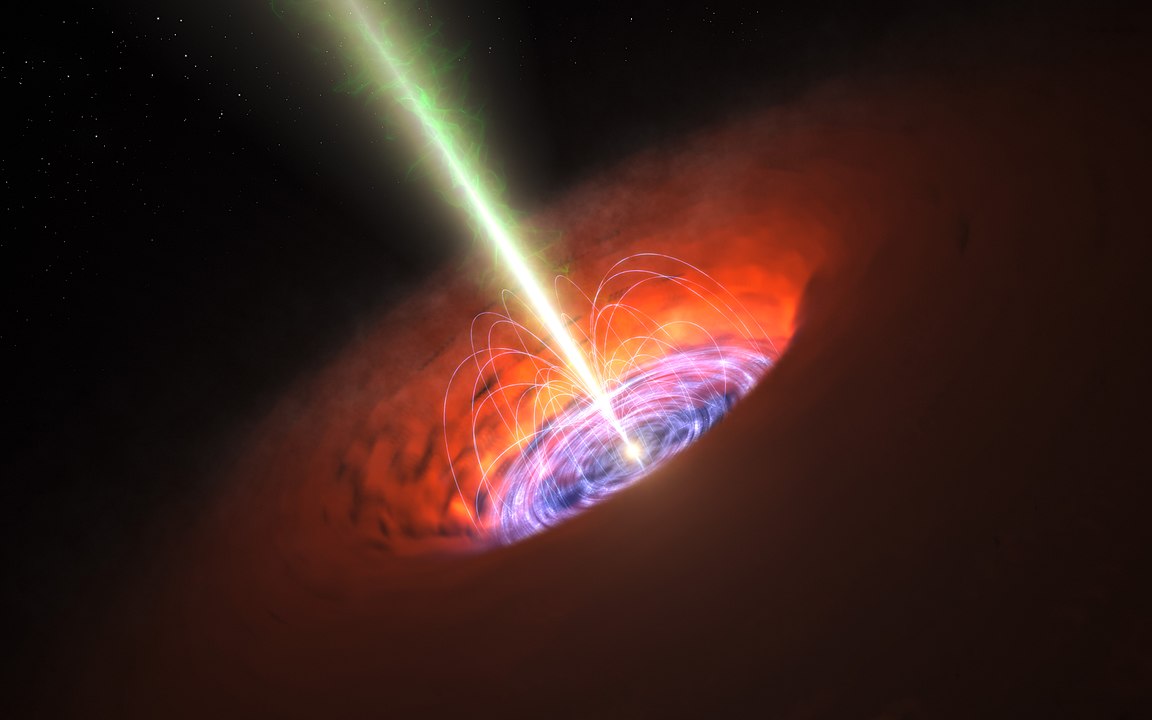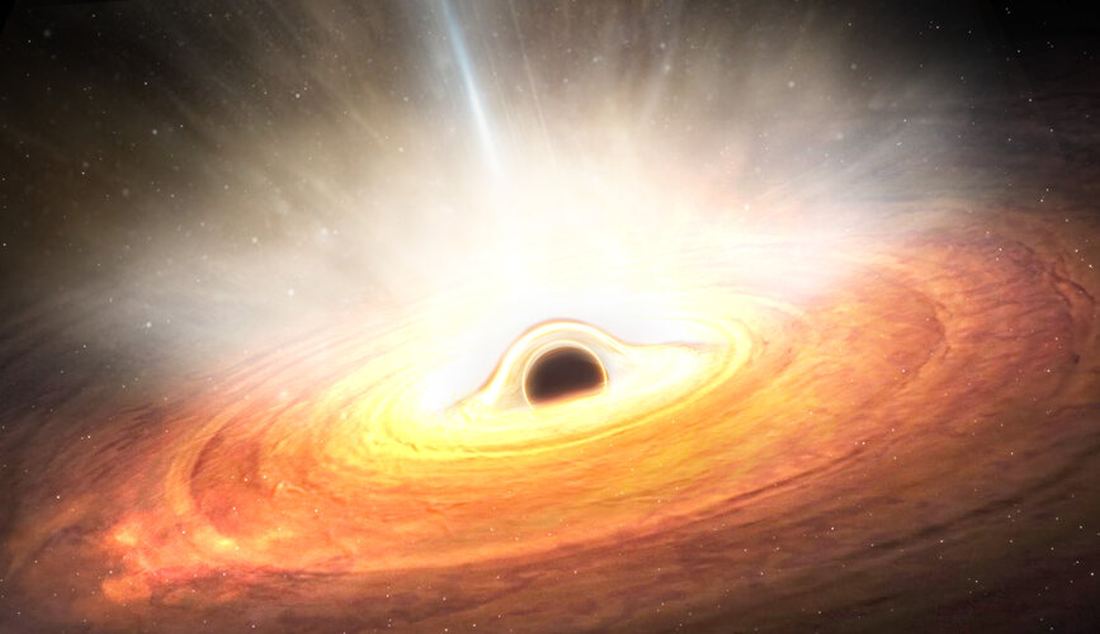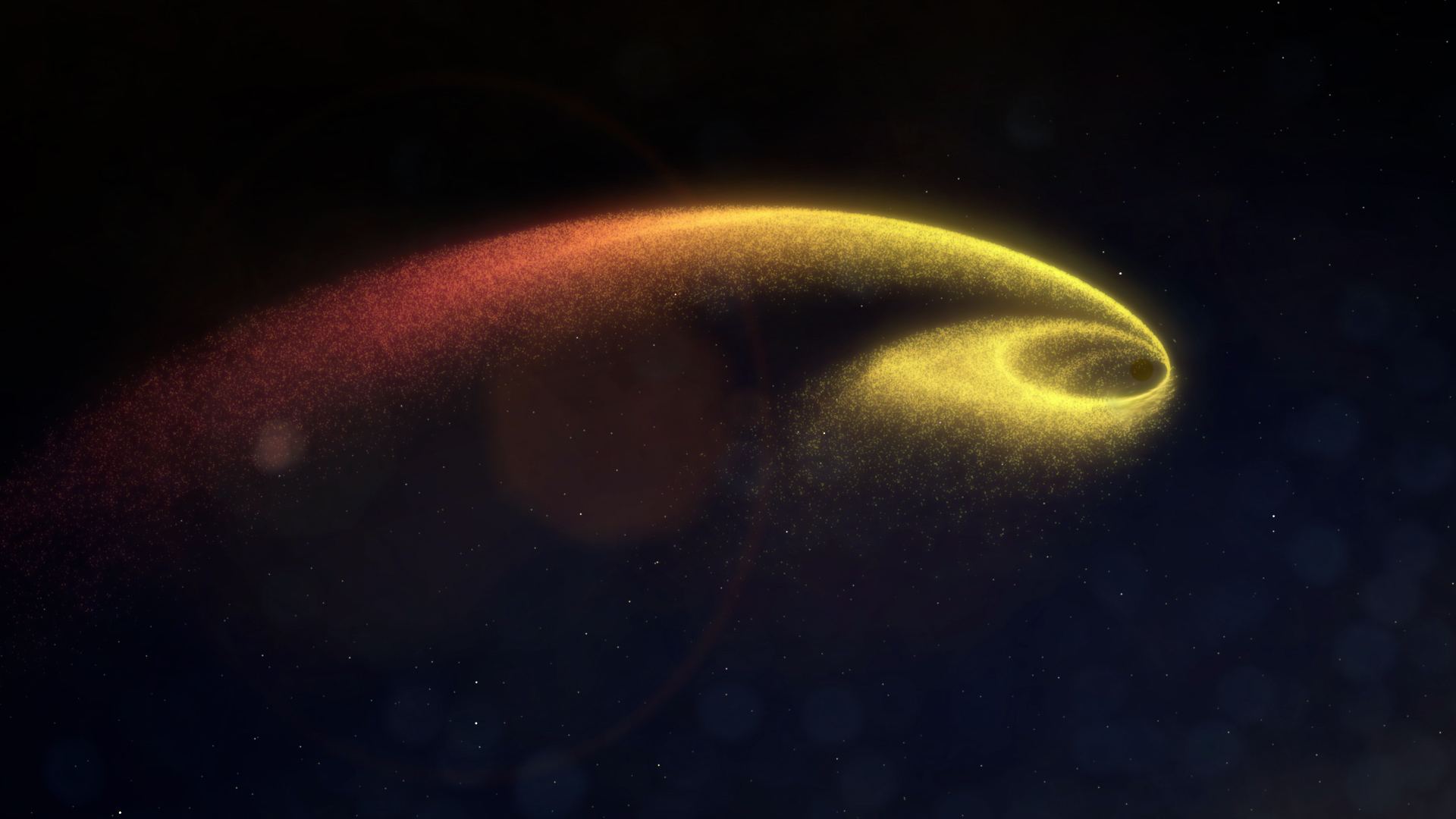Most galaxies are thought to play host to black holes. At the center of Centaurus A, a galaxy 12 million light years away, a jet is being fired out into space. Images that have been captured by NASA’s Chandra X-ray observatory show that the high energy particles have struck a nearby object creating a shockwave. The target is thought to be a giant star, maybe even a binary system, where the collision and turbulence has increased density in the region.
Continue reading “Zap! A Black Hole Scores a Direct Hit With its Jet”Could Primordial Black Holes Be Hiding in Plain Sight?
Are Primordial Black Holes real? They could’ve formed in the unusual physics that dominated the Universe shortly after the Big Bang. The idea dates back to the 1960s, but so far, the lack of evidence makes them purely hypothetical.
If they do exist, a new paper suggests they may be hiding in places so unlikely that nobody ever thought to look there.
Continue reading “Could Primordial Black Holes Be Hiding in Plain Sight?”New Study Suggests Black Holes Get their “Hair” from their Mothers

Despite decades of study, black holes are still one of the most puzzling objects in the Universe. As we know from Einstein’s Theory of General Relativity, the gravitational force of these stellar remnants alters the curvature of spacetime around them. This causes gas, dust, and even photons (light) in their vicinity to fall inwards and form disks that slowly accrete onto their faces, never to be seen again. However, astronomers have also noted that they can produce powerful jets that accelerate charged particles to close to the speed of light (aka. relativistic jets).
These jets lead to powerful gamma-ray bursts (GRBs), which have been observed with black holes that have powerful magnetic fields. However, where these magnetic fields come from has remained a mystery to astrophysicists for some time. According to new research led by scientists from the Flatiron Institute, the source of these fields may have finally been revealed. Based on a series of simulations they conducted that modeled the life cycle of stars from birth to collapse, they found that black holes inherit their magnetic fields from the parent stars themselves.
Continue reading “New Study Suggests Black Holes Get their “Hair” from their Mothers”Sun-Like Stars Around Black Holes: What Gives?
Buried in the treasure trove of the Gaia catalog were two strange black hole systems. These were black holes orbiting sun-like stars, a situation that astronomers long thought impossible. Recently a team has proposed a mechanism for creating these kinds of oddballs.
Continue reading “Sun-Like Stars Around Black Holes: What Gives?”The Biggest Black Holes May Start From The Tiniest Seeds
The existence of gigantic black holes in the very early universe challenges our assumptions of how black holes form and grow. New research suggests that these monsters may have found their origins in the earliest epochs of the Big Bang.
Continue reading “The Biggest Black Holes May Start From The Tiniest Seeds”Two Supermassive Black Holes on the Verge of a Merger

In March 2021, astronomers observed a high-energy burst of light from a distant galaxy. Assigned the name AT 2021hdr, it was thought to be a supernova. However, there were enough interesting features that flagged as potentially interesting by the Automatic Learning for the Rapid Classification of Events (ALeRCE). In 2022, another outburst was observed, and over time the Zwicky Transient Facility (ZTF) found a pattern of outbursts every 60–90 days. It clearly wasn’t a supernova, but it was unclear on what it could be until a recent study solved the mystery.
Continue reading “Two Supermassive Black Holes on the Verge of a Merger”Astronomers Map the Shape of a Black Hole's Corona for the First Time

If you were lucky enough to observe a total eclipse, you are certain to remember the halo of brilliant light around the Moon during totality. It’s known as the corona, and it is the diffuse outer atmosphere of the Sun. Although it is so thin we’d consider it a vacuum on Earth, it has a temperature of millions of degrees, which is why it’s visible during a total eclipse. According to our understanding of black hole dynamics black holes should also have a corona. And like the Sun’s corona, it is usually difficult to observe. Now a study in The Astrophysical Journal has made observations of this elusive region.
Continue reading “Astronomers Map the Shape of a Black Hole's Corona for the First Time”Early Black Holes Fed 40x Faster than Should Be Possible

The theory goes that black holes accrete material, often from nearby stars. However the theory also suggests there is a limit to how big a black hole can grow due to accretion and certainly shouldn’t be as large as they are seen to be in the early Universe. Black holes it seems, are fighting back and don’t care about those limits! A recent study shows that supermassive black holes are growing at rates that defy the limits of current theory. Astronomers just need to figure out how they’re doing it!
Continue reading “Early Black Holes Fed 40x Faster than Should Be Possible”How Did Supermassive Black Holes Get So Big, So Early? They Might Have Had a Head Start

Supermassive Black Holes (SMBHs) can have billions of solar masses, and observational evidence suggests that all large galaxies have one at their centres. However, the JWST has revealed a foundational cosmic mystery. The powerful space telescope, with its ability to observe ancient galaxies in the first billion years after the Big Bang, has shown us that SMBHs were extremely massive even then. This contradicts our scientific models explaining how these behemoths became so huge.
How did they get so massive so early?
Continue reading “How Did Supermassive Black Holes Get So Big, So Early? They Might Have Had a Head Start”Using Light Echoes to Find Black Holes

The most amazing thing about light is that it takes time to travel through space. Because of that one simple fact, when we look up at the Universe we see not a snapshot but a history. The photons we capture with our telescopes tell us about their journey. This is particularly true when gravity comes into play, since gravity bends and distorts the path of light. In a recent study, a team shows us how we might use this fact to better study black holes.
Continue reading “Using Light Echoes to Find Black Holes”



